




Dust can accumulate inside radiators over time, causing them to become less efficient and potentially leading to overheating. Cleaning the dust inside radiators is essential to maintain their performance and extend their lifespan. In this article, we will provide you with some effective cleaning tips to help you get rid of dust inside your radiators.
1. Turn Off the Heating: Before you start cleaning, make sure to turn off the heating system. This will prevent any accidents and ensure your safety while working on the radiators.
2. Remove the Covers: Most radiators have covers that can be easily removed. Take off the covers to gain access to the inside of the radiator. If the covers are attached with screws, use a screwdriver to unscrew them.
3. Use a Vacuum Cleaner: A vacuum cleaner with a brush attachment is a handy tool for cleaning the dust inside radiators. Insert the brush attachment into the radiator and move it around to suck up the dust. Pay special attention to the fins and crevices where dust tends to accumulate.
4. Wipe with a Damp Cloth: After vacuuming, use a damp cloth to wipe the inside of the radiator. This will help remove any remaining dust or grime. Make sure the cloth is damp, not wet, to avoid causing any damage to the radiator.
5. Reassemble and Test: Once you have cleaned the inside of the radiator, reassemble the covers and make sure they are securely in place. Turn on the heating system and check if the radiator is functioning properly. If you notice any issues, such as a decrease in heat output, it may be necessary to call a professional for further inspection and maintenance.
Regular cleaning of the dust inside radiators will not only improve their efficiency but also contribute to a healthier indoor environment by reducing the circulation of dust particles in the air. Follow these cleaning tips to keep your radiators in top condition and enjoy the benefits of a well-heated home.
The Importance of Cleaning Radiators
Radiators play a crucial role in heating our homes and offices during the cold winter months. However, over time, they can accumulate a significant amount of dust and debris, which can negatively impact their performance. Therefore, regular cleaning of radiators is essential to ensure their proper functioning and to maintain a clean and healthy living environment.
1. Improved Efficiency
One of the main reasons why cleaning radiators is important is to improve their efficiency. When dust builds up on the surface of the radiator, it creates a barrier that prevents heat from radiating into the room effectively. This means that the radiator will have to work harder and consume more energy to produce the desired level of warmth. By removing the dust, the radiator can operate more efficiently, heating the room faster and using less energy in the process.
2. Prevention of Damage
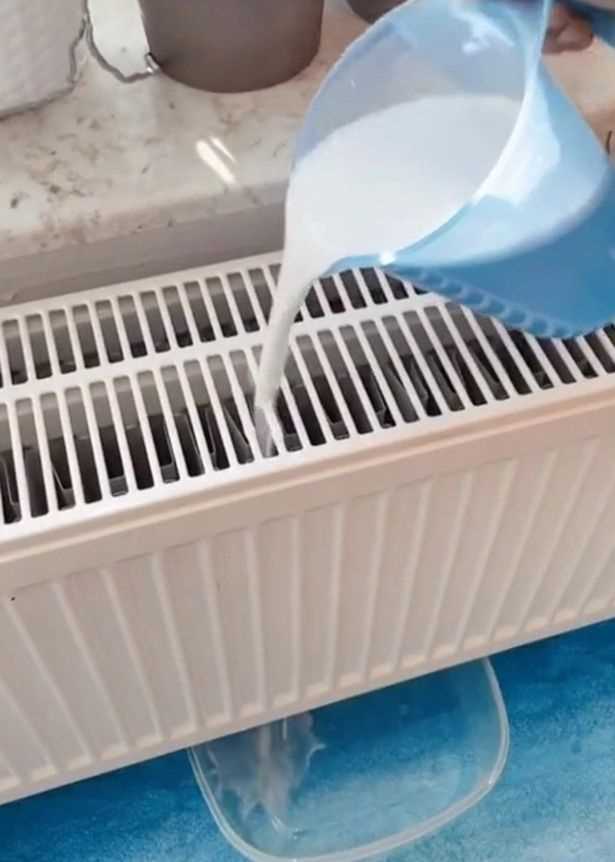
Dust and debris can accumulate not only on the surface of the radiator but also inside it. Over time, this can lead to corrosion and damage to the internal components of the radiator. As a result, the radiator may develop leaks or fail completely, requiring expensive repairs or replacements. Regular cleaning can help prevent such damage by removing the dust and debris before it has a chance to cause any harm.
3. Improved Air Quality
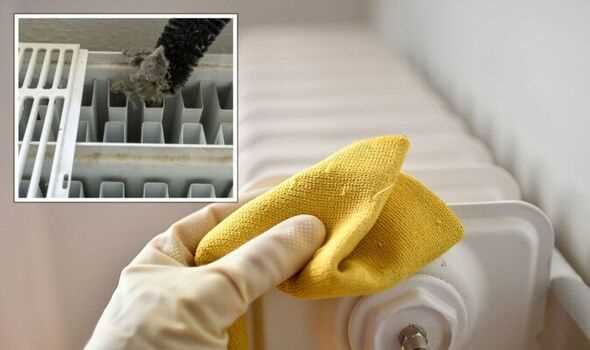
Dust is not only an eyesore but can also negatively affect the air quality in your home or office. When the radiator is in operation, the dust on its surface can get circulated in the air, causing respiratory issues or aggravating allergies and asthma. By regularly cleaning the radiators, you can minimize the amount of dust in the air and create a healthier living environment.
4. Prolonged Lifespan
Regular maintenance and cleaning can significantly extend the lifespan of your radiators. By removing dust and debris, you reduce the risk of corrosion and other forms of damage that can shorten the radiator’s life. In addition, cleaning can help identify any potential issues or defects early on, allowing for timely repairs and preventing further damage.
5. Aesthetics

Clean and well-maintained radiators enhance the overall aesthetics of your home or office. Dusty and dirty radiators can be an eyesore, especially in well-decorated spaces. By keeping your radiators clean, you can maintain a visually pleasing environment that reflects your attention to detail and cleanliness.
In conclusion, cleaning radiators is not only important for their performance and efficiency but also for the air quality and longevity of your heating system. Regular cleaning can help enhance the overall comfort and health of your living or working space and prevent unnecessary expenses on repairs or replacements.
Why Regular Cleaning of Radiators is Essential
Dust and debris often accumulate inside radiators over time, reducing their efficiency and effectiveness. Regular cleaning of radiators is essential for several reasons:
1. Better Heat Distribution
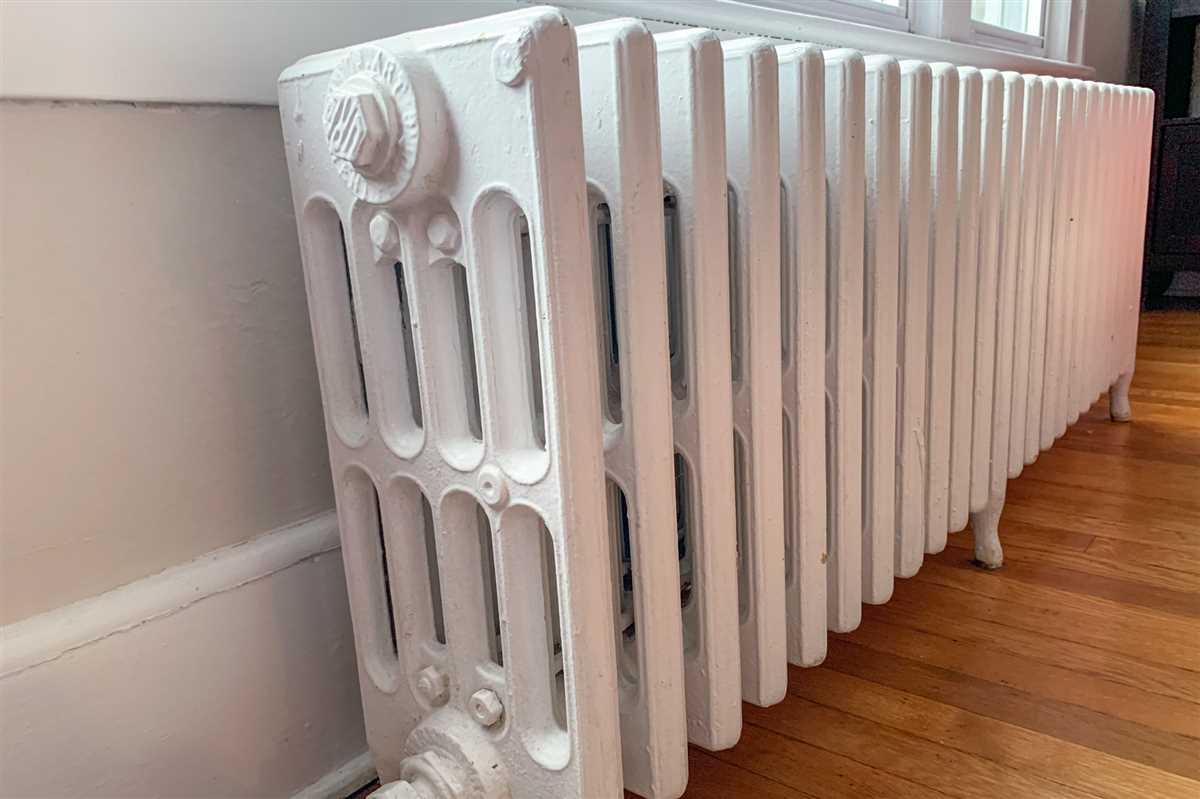
When dust and debris build up inside radiators, they can block the heat flow and prevent the proper distribution of warmth in a room. Regular cleaning ensures that the radiator can operate at its full capacity and distribute heat evenly, creating a more comfortable living environment.
2. Energy Efficiency
A clean radiator can function more efficiently, using less energy to produce the same amount of heat. By regularly cleaning your radiators, you can improve their energy efficiency, which in turn can lead to lower heating bills.
3. Extended Lifespan
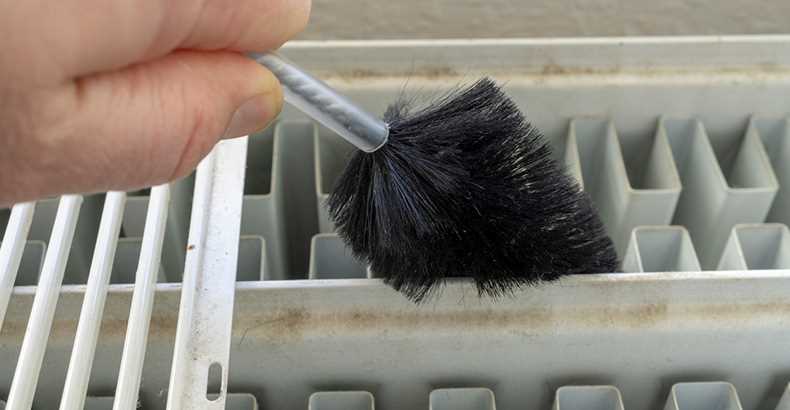
Regular maintenance and cleaning can help extend the lifespan of your radiators. Dust and debris can cause corrosion and damage to the internal components of the radiator, leading to potential leaks or malfunctions. By keeping your radiators clean, you can help prevent these issues and ensure they last for many years.
4. Improved Air Quality
Dust and debris inside radiators can be circulated back into the air when the radiator is in use, reducing the air quality in the room. Regular cleaning helps to remove these pollutants, improving the overall indoor air quality and reducing the risk of respiratory problems or allergies.
5. Prevention of Fire Hazards
Accumulated dust and debris inside radiators can become a fire hazard. When the radiator gets hot, the dust particles can ignite, potentially causing a fire. Regular cleaning reduces the risk of fire hazards and ensures the safe operation of your heating system.
In conclusion, regular cleaning of radiators is essential for better heat distribution, energy efficiency, extended lifespan, improved air quality, and prevention of fire hazards. Make sure to include radiator cleaning as part of your regular household maintenance routine to reap these benefits.
Signs of Dust Build-Up in Radiators
If you suspect that there is dust build-up in your radiators, there are a few signs you can look out for:
- Inefficient heating: If your radiators are not heating up as quickly or as effectively as they used to, it could be a sign of dust build-up. Dust can prevent the heat from circulating properly and can even block the flow of hot water, reducing the efficiency of your heating system.
- Strange noises: If you hear strange noises coming from your radiators, such as hissing, gurgling, or clanking sounds, it could be a sign of dust build-up. The dust can cause air pockets or blockages in the system, resulting in unusual noises.
- Inconsistent heat distribution: If some areas of your home are warmer than others, it could be a sign of dust build-up in your radiators. The dust can create uneven heat distribution, causing certain rooms or areas to be significantly colder or hotter than others.
- Visible dust: If you notice a layer of dust on or around your radiators, it is a clear indication that dust build-up has occurred. Dust particles can settle on the surfaces of the radiators, obstructing the heat output and reducing their efficiency.
If you notice any of these signs, it’s important to clean your radiators to remove the dust build-up and restore their optimal functioning. Regular cleaning and maintenance can help prolong the lifespan of your radiators and ensure efficient heating in your home.
How to Identify Dust Accumulation Inside Radiators
Dust accumulation inside radiators is a common problem that can affect their performance and energy efficiency. Identifying the presence of dust in radiators is important in order to take appropriate cleaning measures. Here are some signs that can help you identify dust accumulation inside radiators:
- Cold spots: If you notice cold spots on your radiator, it may be an indication of dust accumulation. Dust can block the heat transfer, causing certain areas of the radiator to remain cold.
- Reduced heat output: If your radiator is not providing enough heat as it used to, it could be due to dust accumulation. Dust acts as an insulating layer and prevents efficient heat transfer.
- Inefficient radiator: Radiators that take longer to heat up or cool down may have dust accumulation inside. Dust can restrict the flow of hot water or air through the radiator, resulting in reduced efficiency.
Dust accumulation inside radiators can also lead to other issues such as increased energy consumption, higher heating costs, and potential damage to the heating system. Therefore, it is important to regularly check for signs of dust accumulation and clean the radiators as needed.
Regular maintenance and cleaning of radiators can help improve their performance and prolong their lifespan. By identifying and addressing dust accumulation, you can ensure that your radiators operate efficiently and provide optimal heat output.
Tools Required for Effective Cleaning
When cleaning dust from inside radiators, you will need several tools to ensure an effective cleaning process. These tools will help you remove dust and debris from the radiator fins and other hard-to-reach areas.
Here are some essential tools you will need:
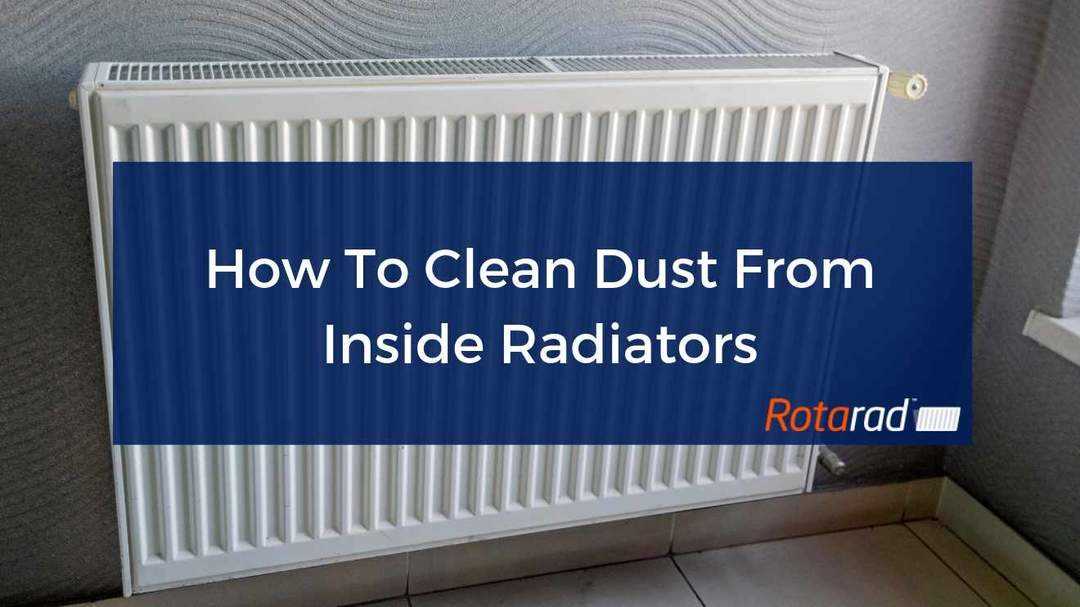
- Soft-bristle brush: Use a soft-bristle brush to brush off loose dust from the radiator fins. This will help loosen and dislodge any dirt or debris that may have accumulated.
- Vacuum cleaner with a brush attachment: A vacuum cleaner with a brush attachment is ideal for removing dust from the radiator. The brush attachment allows you to clean those hard-to-reach areas more effectively.
- Compressed air canister: Compressed air canisters are great for blowing out dust and dirt from the radiator fins. Make sure to follow the instructions on the canister and use it in a well-ventilated area.
- Microfiber cloths: Microfiber cloths are great for wiping down the radiator after cleaning. They are highly absorbent and help remove any remaining dust or dirt.
- Old toothbrush: An old toothbrush can be useful for scrubbing stubborn dirt or debris off the radiator fins. Make sure to use a soft-bristle toothbrush to avoid damaging the fins.
- Gloves: It’s a good idea to wear gloves to protect your hands from dust and any cleaning agents you may use during the cleaning process.
By having these essential tools on hand, you can ensure a thorough and effective cleaning of the dust inside your radiators.
Must-Have Cleaning Equipment for Radiators
1. Vacuum Cleaner
A good quality vacuum cleaner is essential for cleaning radiators. Look for a vacuum cleaner with a long and narrow attachment that can fit into tight spaces. This will allow you to effectively remove dust and debris from the inside of the radiators.
2. Soft Bristle Brush
A soft bristle brush is useful for loosening up dust and dirt that may be stuck on the surface or inside the radiator fins. Make sure to choose a brush with soft bristles to avoid damaging the radiator.
3. Compressed Air Canister
A compressed air canister is another handy tool for cleaning radiators. It can help blow out dust and debris that may be trapped in hard-to-reach places. However, be careful when using compressed air, as it can blow the dust around and create a mess if not used properly.
4. Microfiber Cloths
Microfiber cloths are excellent for wiping down the surface of radiators after cleaning. They are highly absorbent and can effectively remove any remaining dust or dirt. Plus, they are gentle on the surface of the radiator and won’t leave any scratches.
5. Radiator Brush
A specialized radiator brush can be useful for cleaning the fins and grilles of the radiator. These brushes are designed to fit into the narrow spaces between the fins and can help remove dust and debris from those hard-to-reach areas.
6. Cleaning Solution
Depending on the level of dirt and grime on your radiator, you may need a cleaning solution. Look for a gentle yet effective radiator cleaning solution that is safe to use on the surface of the radiator. Avoid using harsh chemicals that may damage the radiator.
7. Ladder or Step Stool
If your radiator is located high up on the wall, a ladder or step stool will be necessary to reach it. Make sure to choose a sturdy and stable ladder or stool to ensure your safety while cleaning.
8. Dust Mask and Gloves
When cleaning radiators, it’s important to protect yourself from dust and debris. Wear a dust mask to prevent inhaling the particles and gloves to protect your hands from dirt and cleaning solutions.
9. Plastic Sheets or Drop Cloths

Using plastic sheets or drop cloths can help protect your floor or furniture from any potential mess while cleaning radiators. Place them underneath and around the radiator to catch any falling dust or debris.
10. Flashlight
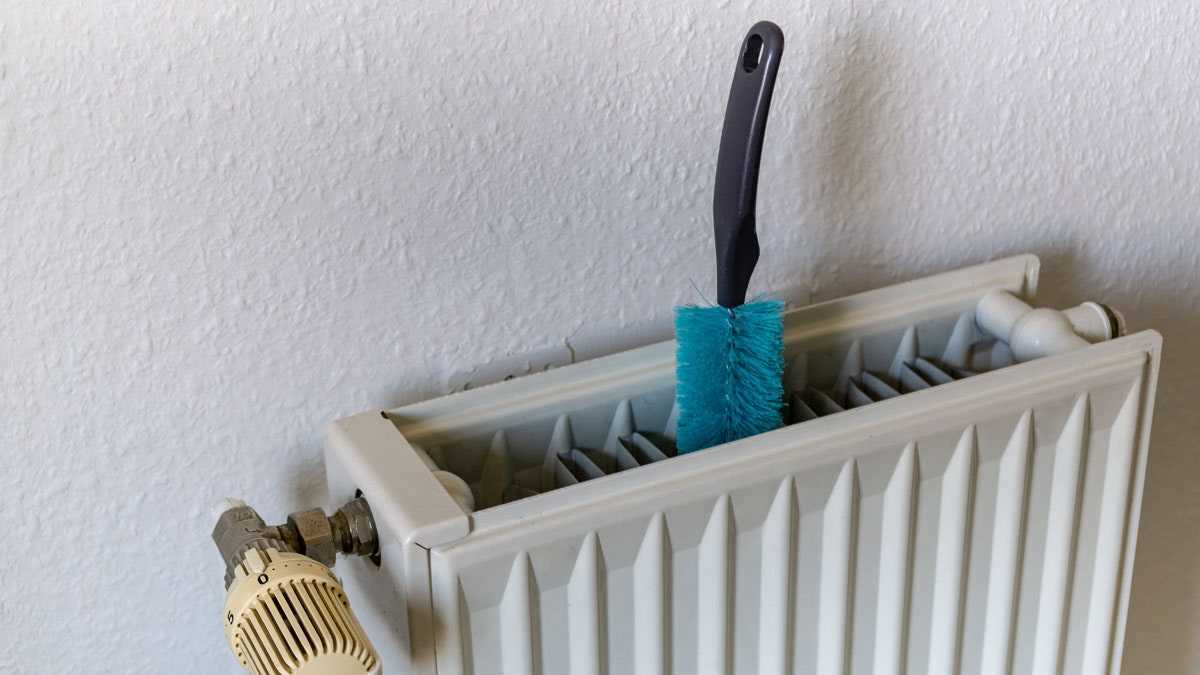
A flashlight can be handy for inspecting the interior of the radiator and identifying areas that may need extra cleaning. Use it to shine light into the fins and other tight spots to ensure thorough cleaning.
Step-By-Step Guide to Clean Radiators
Tools and Materials Needed:
- Dust brush or vacuum cleaner with a brush attachment
- Dry microfiber cloth or old towels
- Clean water
- Mild detergent or radiator cleaner
- Soft-bristled brush or toothbrush
Step 1: Preparation
Before starting the cleaning process, make sure to turn off the radiator and allow it to cool down completely.
Step 2: Remove Dust
- Use a dust brush or a vacuum cleaner with a brush attachment to remove loose dust and debris from the surface of the radiator.
- Alternatively, you can wrap a dry microfiber cloth or old towel around a long stick or ruler and gently slide it through the radiator fins to remove dust.
Step 3: Prepare Cleaning Solution
- Prepare a cleaning solution by mixing clean water with a mild detergent or radiator cleaner as per the manufacturer’s instructions.
- Make sure to use a gentle cleaner that will not damage the radiator’s surface.
Step 4: Clean the Surface
- Dampen a soft cloth or sponge in the cleaning solution and gently wipe the surface of the radiator.
- Pay extra attention to areas with stubborn stains or buildup.
- If necessary, use a soft-bristled brush or toothbrush to clean hard-to-reach areas and remove any remaining dirt.
Step 5: Rinse and Dry
- Rinse the surface of the radiator with clean water to remove any cleaning solution residue.
- Use a dry microfiber cloth or old towels to thoroughly dry the radiator.
Step 6: Finishing Touches
- Inspect the radiator for any remaining dust or dirt.
- If you notice any, repeat the cleaning process as necessary.
- Once the radiator is completely clean and dry, turn it back on and ensure it is functioning properly.
Regular cleaning of radiators can help improve their efficiency and prolong their lifespan. Remember to clean them at least once a year or more frequently if needed.
FAQ
How often do radiators need to be cleaned?
Radiators should be cleaned at least once a year to prevent dust buildup and maintain their efficiency.
What are some effective cleaning methods for removing dust from radiators?
There are several effective cleaning methods for removing dust from radiators. One method is to use a vacuum cleaner with a brush attachment to gently remove the dust. Another method is to use a soft cloth or microfiber duster to wipe away the dust. For stubborn dust, you can use a mixture of warm water and mild detergent to clean the surface of the radiator.
Why is it important to get rid of dust inside radiators?
It is important to get rid of dust inside radiators because dust buildup can reduce their efficiency. When radiators are filled with dust, they cannot heat up the air effectively, resulting in lower heat output. Additionally, dust can block the airflow, causing the radiator to overheat and potentially damage the heating system.
Are there any signs that indicate it’s time to clean the radiators?
Yes, there are a few signs that indicate it’s time to clean the radiators. If you notice that some rooms in your house are not being heated properly or if your heating bills have increased, it could be a sign of dust buildup in the radiators. Additionally, if you see dust particles coming out of the radiators when they are turned on, it is definitely time to clean them.
Can I clean the radiators myself or do I need to hire a professional?
You can clean the radiators yourself without needing to hire a professional. The cleaning methods mentioned in the article can easily be done by most homeowners. However, if you are uncomfortable or unsure about cleaning the radiators yourself, it is always a good idea to consult a professional to ensure the job is done properly.















